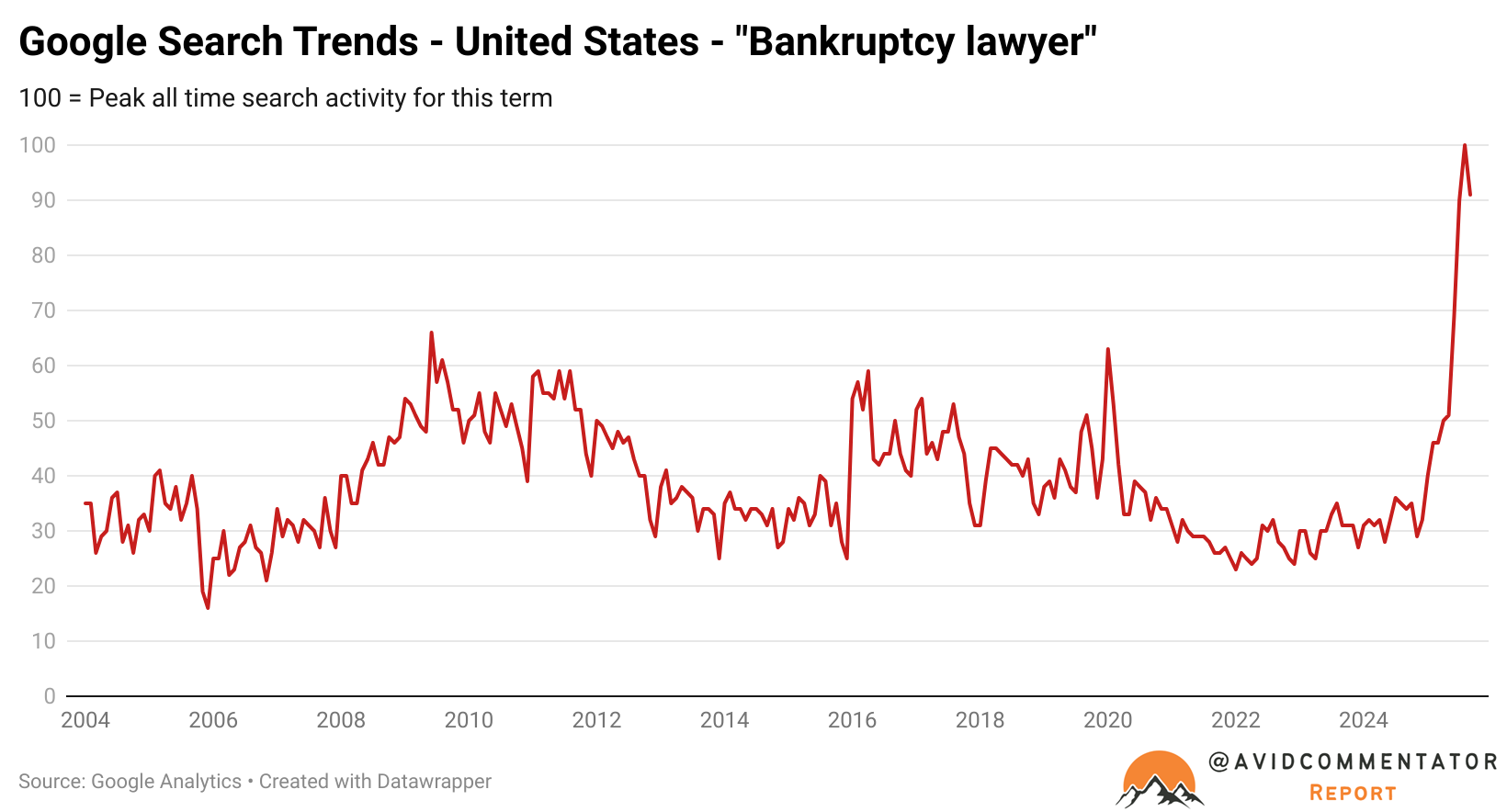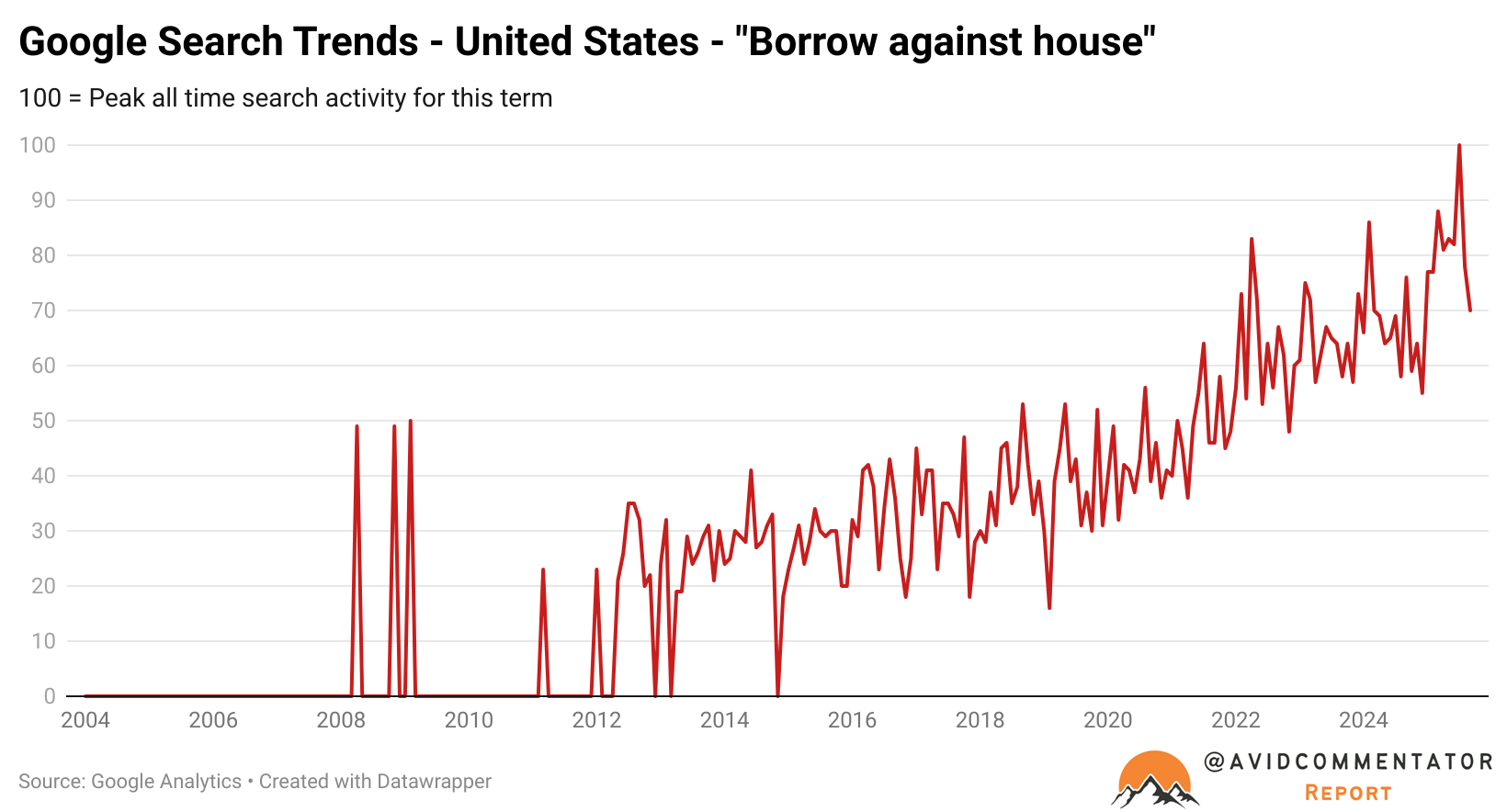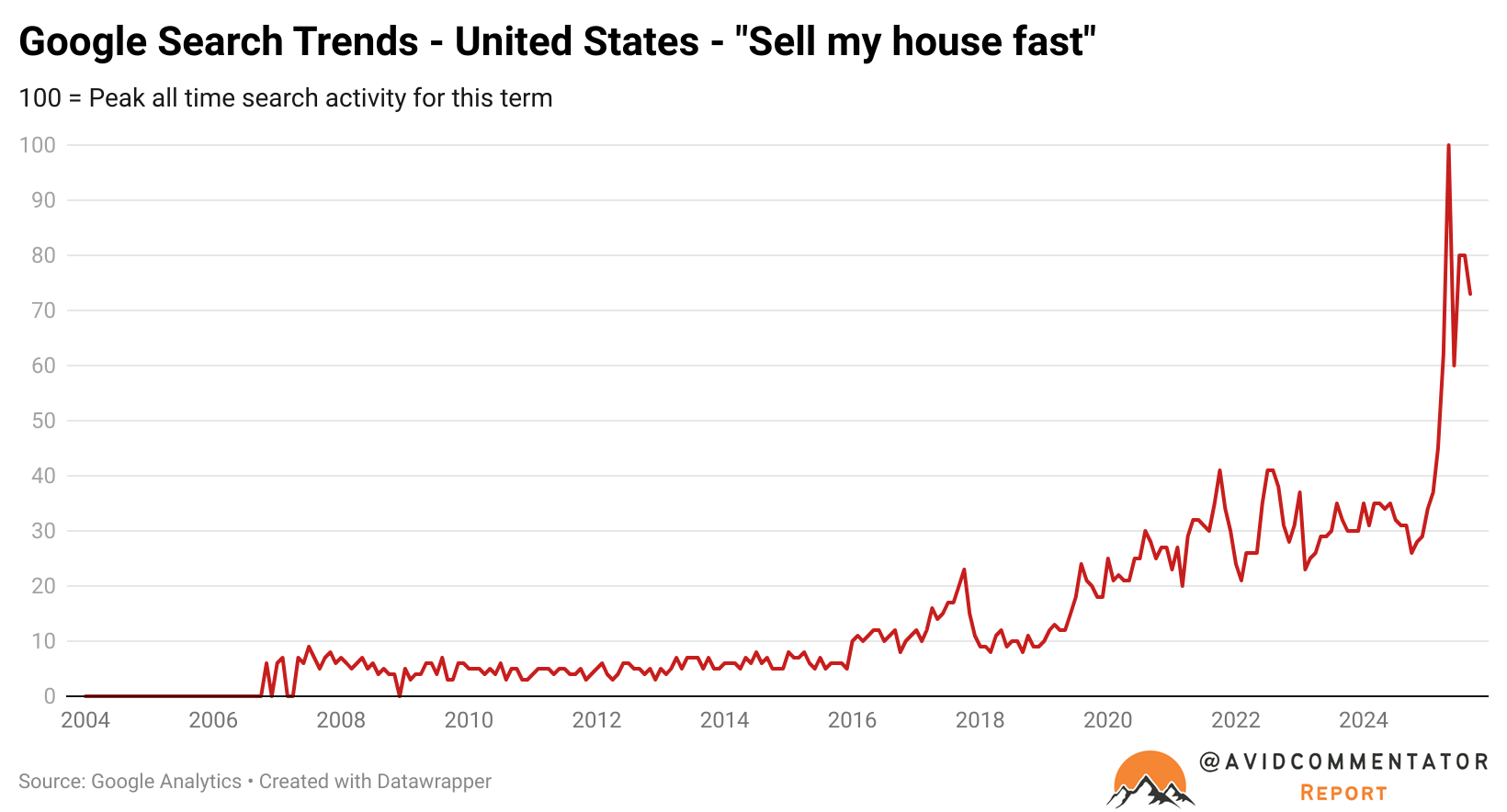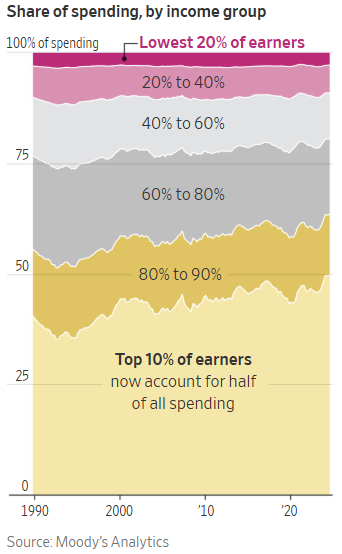Recently on Twitter (also known as X), I came across a series of charts purporting to show the trend in certain search terms on Google indicative of financial stress.
Fake charts are increasingly common, so I thought it would be best to do my own research on Google search trends to see if I could reproduce the results and, if so, input my own search terms to see what results could be derived.
What I found rather swiftly was that the original analysis was indeed broadly accurate and, at least at face value, pointing to growing levels of financial stress.
First, a bit about how Google Search Trends illustrates its data.
The figure used is indexed to the all-time high number of searches for that particular term, with 100 denoting the peak level. So if the search for “Australian housing” peaked in, say, July 2021 and the result for the present month was 50, there are half the number of searches taking place for that term today versus the peak.
One of the terms searched for was “Bankruptcy lawyer”.
Prior to 2025, the highest number of searches was in early 2020, which delivered a result of 63.
In August, the number of searches peaked and has since declined 9%.

American search interest in good old ‘Equity Mate’ aka borrowing against one’s house, also hit an all-time high in July and has since moderated, albeit to a still elevated level.

Search interest in “Sell my house fast” also hit an all-time high in May. While it has moderated somewhat, it remains at a highly elevated level compared with pre-2025 levels, where its prior all-time record high was 41, which it recorded during the pandemic.

The Takeaway
To what degree these numbers from Google provide anything approaching a concrete insight into the financial state of American households is unclear. This could be nothing more than a statistical anomaly or we could look back on this in coming years and see there was a degree of utility to the numbers.
What is worth emphasising is that the proportional contribution to the overall consumer spending from the bottom 90% of American households continues to fall with each passing year, with the share of household consumption done by the top 10% continuing to grow rapidly.
According to a February 2025 analysis from ratings agency Moody’s, 49.7% of all consumer spending is done by the top 10% of households.

Chart source: Wall Street Journal
In short, it is increasingly the wealthy powering the U.S. consumer economy, thereby resulting in a situation where the financial stress of households on the lower rungs of the socioeconomic ladder no longer matters to the performance of the broader economy in the way it once did.
It is a challenging and deeply concerning state of affairs, but these are ultimately the circumstances we find ourselves in.
It is well known that tens of millions of American households are facing significant struggles, yet there is little indication of the necessary policy changes from either side of politics to alleviate their challenging circumstances.

